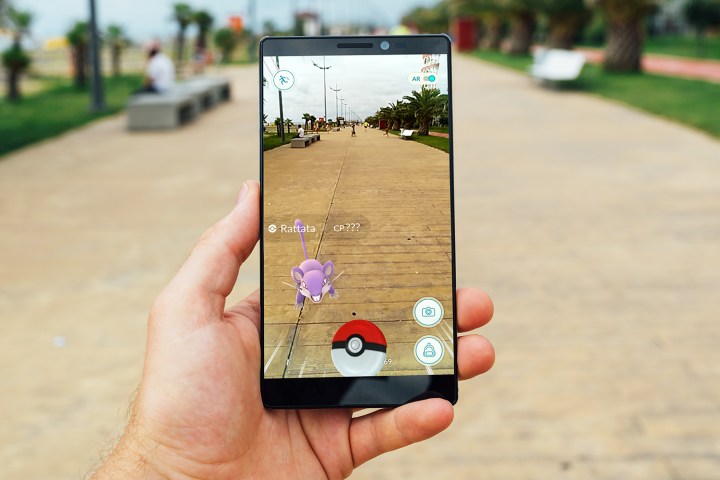
Previously, Pokémon Go players could hunt down specific Pokémon by following their “tracks.” Essentially, the game provided a list of Pokémon lurking nearby, along with one to three “step” icons revealing which creature was the closest. The game even provided a compass pointing to the Pokémon residing at the shortest distance. However, this feature broke for many players not too long after the game hit iOS and Android. Now, it’s disabled altogether.
However, before this latest update, the broken feature led to the launch of Pokévision and similar websites dedicated to providing Pokémon Go players with the exact location of Pokémon, and how long they would reside at that point. There were also third-party mobile apps designed to provide the same service. However, Niantic and Nintendo wouldn’t have any of that, and apparently sent out cease-and-desist letters, shutting down the Pokémon-tracking tools.
“We made Pokévision not to ‘cheat.’ We made it so that we can have a temporary relief to the in-game tracker that we were told was broken,” writes Yang Liu from Pokévision. “John, at SDCC, you said that you guys were working on ‘fixing the in-game tracker.’ This made everyone believe that this was coming sometime soon. We saw Pokévision as a stopgap to this — and we had every intention in closing it down the minute that Pokémon Go’s own tracker restored functionality.”
According to Liu, Pokévision had nearly 50 million unique visitors, with 11 million visiting the site daily. That’s around half of the Pokémon Go player base trying to figure out where Pokémon were lurking in their area. Players weren’t trying to “cheat,” but rather use a service similar to the one Niantic originally implemented into the game itself. Granted, the third-party tool may have provided too much information, but it was better than no tracking system at all. Then again, the original Pokémon games don’t have a tracking system to rely on.
“After disabling the in-game tracker and Pokévision, the ratings on iOS and Android Google Play store went from 4.0 stars to 1.0–1.5,” he adds. “I am only one person, I admit that my sole opinion is not important, but what about the countless players begging for the game to be restored to its former state? I may be biased in saying that Pokévision being down had an impact on the amount of negative ratings, refund requests, and outcry on social media — but could it be true?”
Pokémon Go players are reportedly now demanding refunds for their in-game purchases, with some success, due to the changes Niantic made to the game. Although Pokémon Go is free to play, players can purchase PokéCoins using real-world money to buy virtual items like PokéBalls, incense for luring Pokémon, lucky eggs, lure modules, egg incubators, a bag upgrade, and a storage upgrade. Prices range between 100 coins for $0.99 to 14,500 coins for $99.99.
Ultimately, Liu’s letter pleads with the developer to listen to the Pokémon Go community feedback and restore the game back to its original state. You can read the public letter in its entirety by heading here.


